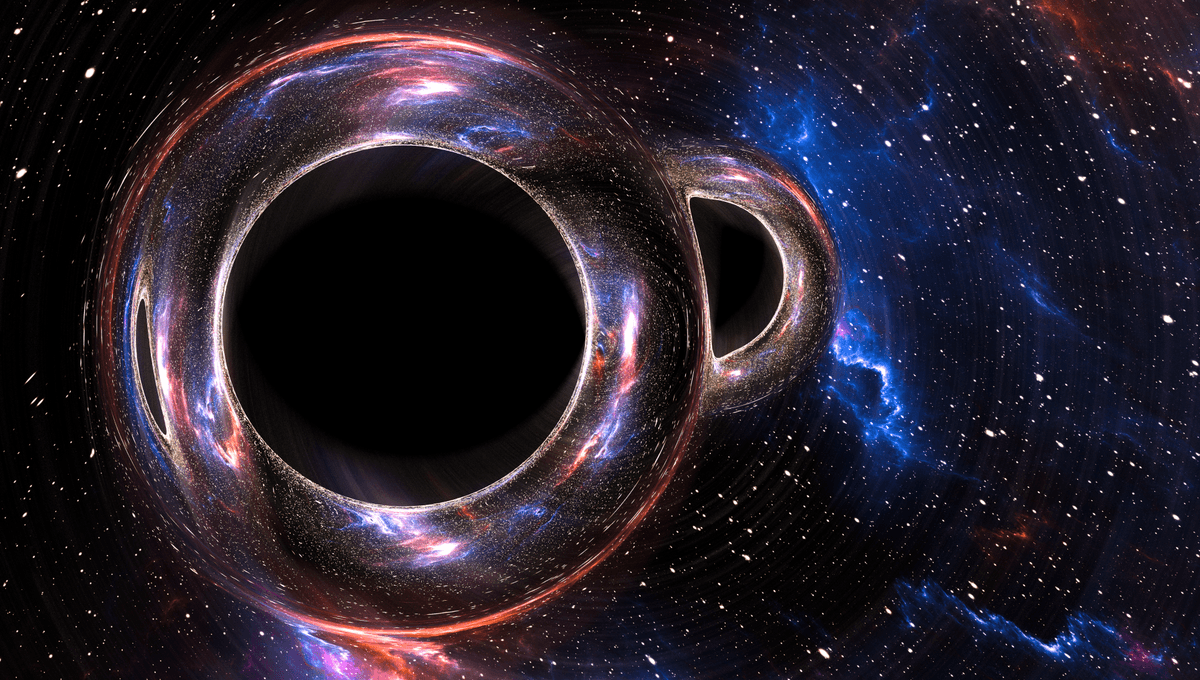-
Новости
- ИССЛЕДОВАТЬ
-
Страницы
-
Статьи пользователей
-
Форумы
Record-Breaking Gravitational Wave Detection Suggests These Black Holes Merged Before

Record-Breaking Gravitational Wave Detection Suggests These Black Holes Merged Before
The international LIGO-Virgo-KAGRA Collaboration reports the observations of two record-breaking events in gravitational wave observations. They were detected in October and November 2024, and they might be a crucial step forward in our understanding of the ripples in space-time and the events that create them.
The rest of this article is behind a paywall. Please sign in or subscribe to access the full content. In the 10 years since the first detection of gravitational waves, we have detected hundreds of these waves produced by the collisions between very dense objects, either neutron stars or black holes. These two new observations might represent a paradigm shift in what’s out there. GW241011 was detected on October 11, 2024. It was the collision between two black holes around 17 and seven times the mass of our Sun. The event took place 700 million light-years away. What was incredible about GW241011 is the spin of the heavier black hole before merging. It was the fastest rotating black hole, spinning at around 75 percent of the theoretical maximum. The second event (GW241110) had similar masses of black holes, around 16 and eight times the mass of our Sun. The peculiarity here was also the spin, but not how quickly it rotates: its direction. The two black holes orbit each other before they merge. Usually, the black holes spin in the same direction as their orbit, but in this case, the larger black hole was spinning in the opposite direction. A first of its kind. The two record-breaking events hint at the two larger black holes already being the product of a black hole merger. The ones detected last year are their second, making them second-generation black holes. This is fascinating in itself, but also because of what it tells us about the environment where these mergers take place. "GW241011 and GW241110 are among the most novel events among the several hundred that the LIGO-Virgo-KAGRA network has observed,” Stephen Fairhurst, professor at Cardiff University and spokesperson of the LIGO Scientific Collaboration, said in a statement. “With both events having one black hole which is both significantly more massive than the other and rapidly spinning, they provide tantalizing evidence that these black holes were formed from previous black hole mergers." “These detections highlight the extraordinary capabilities of our global gravitational wave observatories,” added Gianluca Gemme, spokesperson of the Virgo Collaboration. “The unusual spin configurations observed in GW241011 and GW241110 not only challenge our understanding of black hole formation but also offer compelling evidence for hierarchical mergers in dense cosmic environments: they teach us that some black holes exist not just as isolated partners but likely as members of a dense and dynamic crowd. These discoveries underscore the importance of international collaboration in unveiling the most elusive phenomena in the universe.” We interviewed several experts last month to mark the first decade of gravitational wave observations. Professor Vicky Kalogera, from Northwestern University, told us then that: “The measurements we are making now remain the most precise measurements humans have ever achieved in any field of science and engineering.” These two record-breaking events were measured with such precision that the team was able to conduct both particle physics and general relativity tests on them. On the former side, they looked at the potential effects of ultralight bosons, hypothetical particles beyond the standard model that might explain dark matter. A large swathe of possible masses has been excluded thanks to the observation. For general relativity, the team looked for effects that might not be explained by Einstein’s theory, but found a good agreement between theory and observations. Although finding what lies beyond might just be a matter of observing more of these events. “This discovery also means that we're more sensitive than ever to any new physics that might lie beyond Einstein's theory,” explained paper co-author Carl-Johan Haster, assistant professor of astrophysics at the University of Nevada, Las Vegas. A paper describing these discoveries is published in The Astrophysical Journal Letters.


